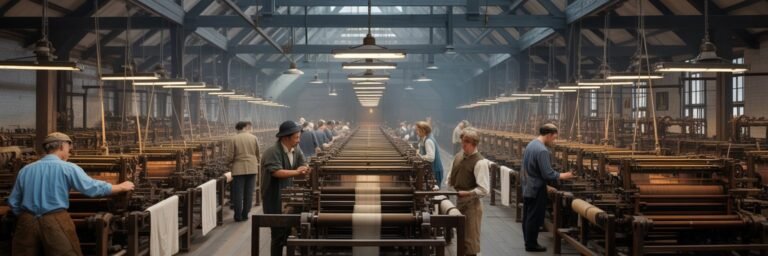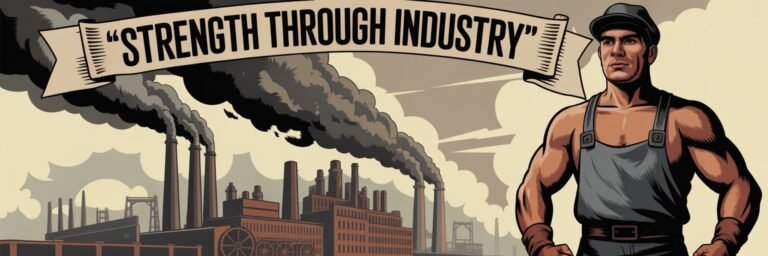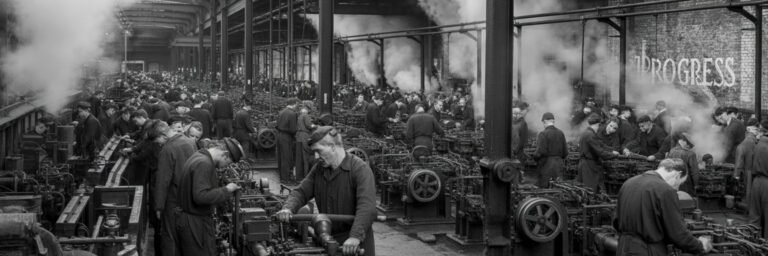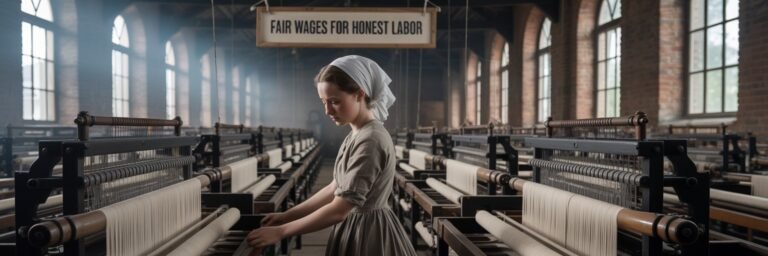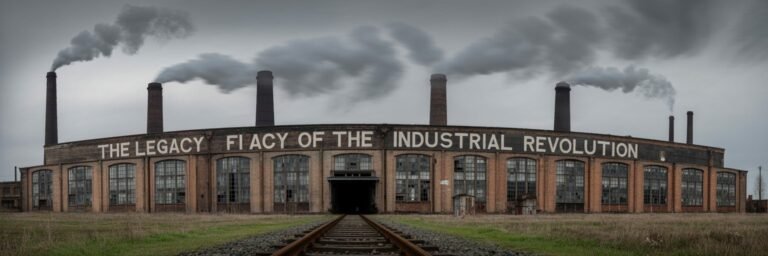INTRODUCTION
Welcome to another fascinating journey through time and history. Today, we delve into the depths of the Industrial Revolution: a pivotal epoch in human civilization that altered the course of everything from economics, politics, and society. But as much as it was a period of incredible growth, the Industrial Revolution did not last forever. Unexpectedly and abruptly, it collapsed, and this curious phenomenon is the focus of our journey today—What led to the collapse of the Industrial Revolution?
HISTORICAL BACKGROUND
The Industrial Revolution, a period between the 18th and 19th centuries, corniced society from agrarian, handicraft economies towards industrial and machine manufacturing. This remarkable transition started in Britain around 1760 and subsequently spread to Western Europe, and later on, to other parts of the world.
Manufacturing saw unheralded developments—thanks to the rise of the factory system. Innovations in the cotton industry, improved systems of transport such as canals, railways and roads, enhanced iron-making techniques, and the ever-prominent revolution in steam power, spurred rapid industrial and economic growth.
However, despite its monumental proliferation, this era faltered and eventually crumbled, marking a significant turn of events in world history. But what led to this collapse, and why was it so critical in shaping our present society?
THEORIES AND INTERPRETATIONS
Several theories have been proposed by historians, economists, and sociologists to explain the puzzling collapse of the Industrial Revolution. One of the preeminent theories is the ‘Malthusian Trap.’ British scholar Thomas Robert Malthus proposed that populations tend to increase exponentially while food production grows linearly, eventually leading to an inevitable deficiency.
Malthus hypothesized that the burgeoning population during the Industrial Revolution strained resources and infrastructure, fostering an environment ripe for collapse. Other scholars, like David Ricardo and Karl Marx, echoed this sentiment, with Marx attributing the collapse to the inherent contradictions in the capitalist system that arose during the Industrial Revolution.
Another theory is the ‘Theory of Economic Cycles.’ Promulgated by economists like Nikolai Kondratiev and Joseph Schumpeter, they argue that economies go through natural cycles of boom and bust. The Industrial Revolution, according to them, represents a prolonged upswing culminating in an inevitable downturn.
MYSTERIES AND CONTROVERSIES
The collapse of the Industrial Revolution is fraught with mysteries and controversies. Historians contest the reasons behind the collapse—was it a product of economic limitations, social unrest, or merely a natural cycle of any revolution? While each theory sees notable acceptance, disagreements persist.
A contentious issue revolves around the argument of Karl Marx, who posited that the Industrial Revolution collapsed due to class struggle. This interpretation, while gaining substantial academic traction, has been met with fierce critique, especially from historians and economists subscribing to the free-market school of thought.
Still others argue that the Revolution never truly collapsed but merely transformed into a more technologically advanced modern industrial society. It’s a debate that is ongoing, and not one likely to be settled soon.
SYMBOLISM AND CULTURAL SIGNIFICANCE
It’s undeniable that the Industrial Revolution’s collapse is laden with symbolism and cultural value. It represents the failure of unregulated industrial and capitalistic growth. This period saw an unparalleled rise in pollution, child labor, and urban crowding, issues that still haunt the modern world.
Culturally, the collapse instigated an introspective era in European society. There emerged a strong intellectual and artistic reaction against industrialization, visibly echoed in the romanticism movement which glorified natural beauty and scorned industrial advancement.
Notably, the fall of the Industrial Revolution heralded a new shift toward workers’ rights and regulations, indirectly sparking movements for labor laws and trade unions that still exist today.
MODERN INVESTIGATIONS
Modern investigations into the collapse of the Industrial Revolution retain the complex tapestry woven by older theories, while incorporating newer concepts like societal adaptation and economic diversification.
Historians such as Joel Mokyr have noted that while the Revolution experienced what appears to be a collapse, it was essentially a metamorphosis. As British hegemony waned, other nations adapted to industrial means, and the Revolution evolved into an international movement.
Economic historians like Robert C. Allen have examined the role of wage and price structures in the Revolution’s collapse. They argue that economic disparities and the inability of the system to diversify beyond coal and steam-powered industries precipitated the end of the revolution.
LEGACY AND CONCLUSION
The collapse of the Industrial Revolution, while signaling an end, also heralded a beginning. It sparked the onset of reforms and regulations, led to the rise of new economic order, and ushered societies into the era of modern capitalism.
Many of the issues first noticed during the Revolution: income inequality, environmental concerns, and workers’ rights, continue to resonate in contemporary discourse. This collapse was a turning point, a cornerstone that helped shape the modern world.
In some ways, we are the products of this collapse. That momentous shift from the smoke-filled factories to a more equitable, less extractive industrial society is still ongoing. The collapse of the Industrial Revolution is not an isolated historical event but a key chapter in humanity’s story. And as with all history, it continues to echo in our present, providing us valuable lessons for our future.
The failing mechanics of the captivating epoch of the Industrial Revolution is assuredly intricate; however, unspinning this complexity helps us better understand the ebb and flow of human civilization—an understanding that is more vital now than ever before.

